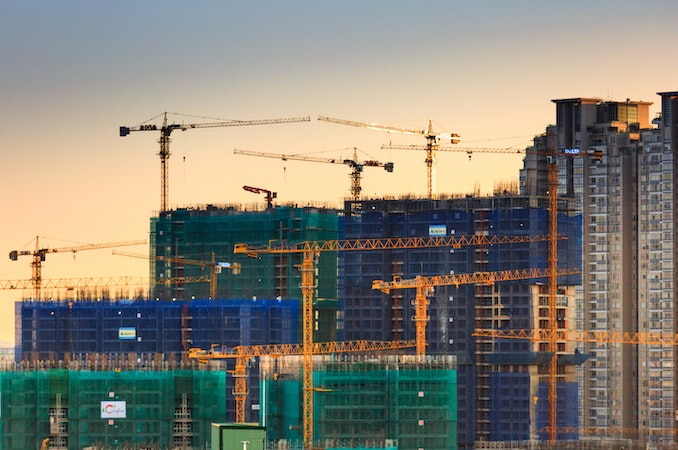Causes of Construction Site Waste
Construction sites are notorious for creating a large amount of waste. The waste often includes materials such as wood, concrete, metals, plastics and glass. Every year, the construction industry produces massive amounts of debris and other hazardous materials that can have a negative impact on the environment. Understanding the causes of construction site waste helps to reduce its negative effects.
One major cause of construction site waste is poor planning and management. Inadequate construction waste removal can lead to over-ordering of building materials that aren’t needed or used during the project’s completion. This results in excess material being thrown away instead of being recycled or reused. Poor organisation of tasks onsite also leads to inefficient use of resources, thus resulting in more material ending up as landfill rather than being properly disposed of or reused elsewhere.
Another key cause is improper disposal practices at construction sites which often lead to hazardous materials such as asbestos and lead-based paints entering into landfills instead of being safely disposed of according to local regulations and guidelines set by governing bodies like EPA (Environmental Protection Agency). Improper disposal practices can also result in soil contamination due to leaching from landfills which may require costly cleanups down the road when environmental damage has already occurred. If you’re looking for post construction cleaning in Hamilton, ON then look no further.
Types of Construction Site Waste
Construction sites produce a large amount of waste, and it is important to understand the different types in order to properly manage and dispose of it. Construction site waste can be divided into two main categories: non-hazardous waste and hazardous waste.
- Non-hazardous Waste
Non-hazardous construction site waste includes materials such as scrap metal, wood, cardboard, paper, plastic, glass, asphalt shingles and concrete. These materials are typically collected in dumpsters or bins for disposal or recycling at the end of a project. Scrap metal can be recycled at scrap yards while cardboard boxes can be broken down for recycling through paper mills or other services that specialize in breaking down large loads into smaller pieces for reuse. Wood can also be recycled into mulch or sawdust to help reduce soil erosion on landscaping projects. Other non-hazardous wastes may need special disposal methods such as chemical treatment plants for paint solvents or hazardous material handlers for asbestos abatement projects.
- Hazardous Waste
Hazardous construction site wastes include lead paint chips from older buildings being renovated; asbestos insulation from walls; oil spills; sewage sludge; medical sharps (needles) used during demolition activities; tires from vehicles onsite.
Strategies for Managing and Reducing Construction Site Waste
Construction sites generate a lot of waste. While some of this waste is unavoidable, there are strategies that can be implemented to help manage and reduce the amount of construction site waste.
One way to reduce construction site waste is to use recycled building materials whenever possible. This includes things like reclaimed wood, bricks or metal from previous projects. Recycled materials are not only good for the environment, but also cost-effective for builders and contractors. Additionally, recycled materials can give a project a unique look and add character to the finished product.
Another way to reduce construction site waste is by using digital technology such as 3D printing or laser scanning during the design process. By using digital technology during the design phase, it reduces the need for paper prints which not only saves money but also helps eliminate unnecessary paper wastage onsite. Additionally, it makes it easier for contractors to visualize their projects before starting construction which can help identify potential problems earlier in the process and avoid costly mistakes down the line
Thirdly, builders should look into collaborating with organizations that specialize in recycling or properly disposing of construction site debris such as concrete slabs and scrap metals. Many cities have local organizations that offer these types of services which can make disposing of large quantities of debris.
Benefits of Reducing Construction Site Waste
Construction sites generate a lot of waste that can have a significant impact on the environment. From hazardous materials to papers and plastics, construction site waste is an issue that needs to be addressed. Fortunately, there are many benefits to reducing construction site waste.
One of the most important benefits of reducing construction site waste is improving air quality. Construction sites can produce a large amount of dust and other pollutants which can contribute to air pollution in nearby neighborhoods or communities. By reducing the amount of materials disposed of at the job site, you can help reduce emissions and improve air quality for everyone in your area.
Another benefit is lowering costs associated with disposing of large amounts of debris from the job site. Construction companies often have to pay for disposal services which usually come with additional fees depending on how much material needs to be removed from the property. By reducing what goes into landfills or incinerators, companies can save money by cutting down on disposal costs as well as reduce their environmental footprint at the same time.
Reducing construction site waste also helps preserve natural resources like water and soil since less debris will end up in waterways or fields where it could potentially contaminate them with hazardous materials like lead or asbestos fibers.
Conclusion
In conclusion, construction site waste removal is an important part of the construction process. It ensures that the site is kept clean and safe, while also ensuring that materials are recycled or disposed of properly. This helps to reduce the environmental impact of construction projects and ensure that everyone involved in a project can work in a safe and healthy environment.

